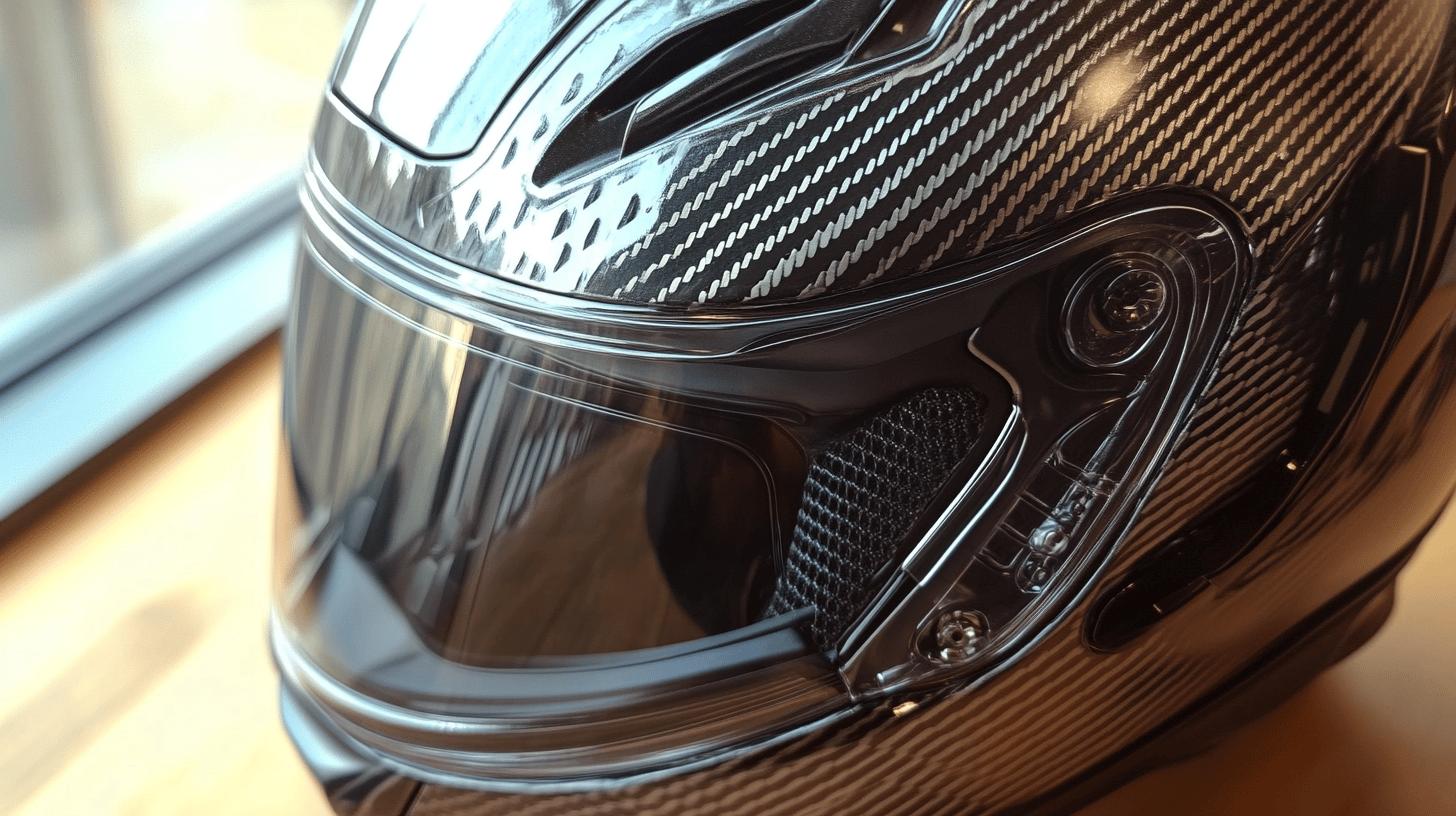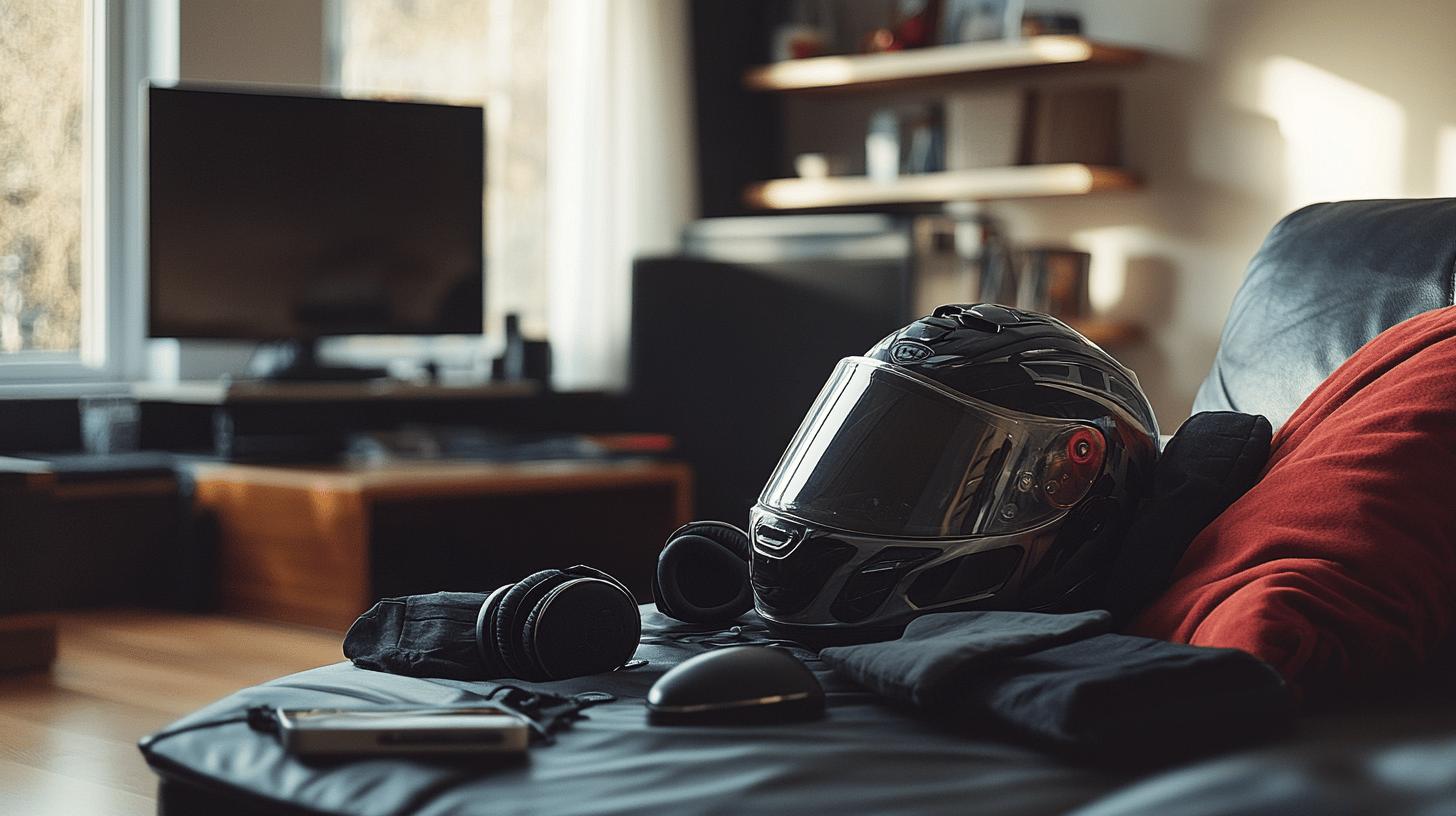Ever felt like your motorcycle helmet is more of a headache than a head protector? That could be a sign your helmet isn't as comfortable as it should be, affecting both safety and enjoyment on the road.
The truth is, a properly fitted helmet is crucial for a smoother, more relaxed ride, preventing discomfort that can distract and annoy even the most seasoned riders.
This article dives into practical ways to optimize helmet comfort, from adjusting the fit and enhancing the inner lining to improving ventilation and selecting the right accessories. Ride smarter and safer by unlocking the secrets to a more comfortable helmet fit.
Adjusting Fit for Maximum Helmet Comfort

Achieving a proper helmet fit is crucial for both safety and comfort. A helmet that is too loose can compromise protection, while one that's too tight can lead to discomfort. Ensuring a snug fit without pressure points enhances the riding experience and protects the rider in case of an accident.
-
Measure Head Circumference: Use a tape measure to determine your head size accurately. This ensures you select a helmet that aligns with your specific measurements, reducing the risk of discomfort.
-
Evaluate Cheek Pad Fit: Cheek pads should fit snugly without excessive pressure. If they feel too tight, consider replacing them with thinner alternatives or opting for adjustable pads that offer a custom fit.
-
Adjust the Chin Strap: A secure chin strap is essential. Ensure it is tight enough to keep the helmet in place but not so tight that it causes discomfort. Many helmets have adjustable buckles for a better fit.
-
Explore Different Brands: Different brands and models may fit differently due to variations in design. Trying multiple options can help identify the best fit for your head shape.
-
Replace Helmet Padding: Over time, padding can compress, affecting fit. Replacing worn padding with new, quality options can restore comfort and fit.
Custom fitting a helmet can significantly enhance comfort. Professional services offer tailored adjustments that cater specifically to your head shape and size. These services might include reshaping the interior liner or using advanced fitting techniques to eliminate pressure points.
By prioritizing custom fitting, riders can ensure that their helmets not only meet safety standards but also provide a comfortable and enjoyable riding experience. This tailored approach often leads to increased rider confidence and satisfaction on the road.
Enhancing Inner Lining Comfort

A helmet's interior lining plays a pivotal role in determining overall comfort during rides. Quality inner linings provide necessary cushioning and help distribute pressure evenly across the head, minimizing discomfort. Replacing or adjusting the lining with superior materials can significantly enhance the helmet-wearing experience and reduce pressure points.
-
Hypoallergenic Liners: Opt for hypoallergenic materials to minimize irritation and allergic reactions, promoting a more comfortable ride for those with sensitive skin.
-
Replaceable Liners: Look for helmets with easily replaceable liners, allowing for regular updates and maintenance to maintain comfort and hygiene.
-
Moisture-Wicking Materials: Choose liners made from moisture-wicking fabrics to help manage sweat and keep the interior dry and comfortable during longer rides.
- Memory Foam Padding: Consider liners with memory foam for a custom fit that conforms to the unique contours of your head, enhancing both comfort and support.
Investing in custom or aftermarket liners can vastly improve helmet comfort. These liners are often crafted to fit the specific dimensions of a rider's head, addressing individual comfort needs more precisely than standard options.
Custom liners can be tailored to alleviate specific pressure points, providing a snug yet comfortable fit that enhances the overall riding experience. By prioritizing interior comfort, riders can enjoy extended rides without the discomfort that poorly fitted liners can cause, ultimately leading to a safer and more enjoyable journey on the road.
Improving Ventilation for Cooler Rides

Proper airflow is crucial for maintaining comfort during motorcycle rides. A well-ventilated helmet can significantly reduce heat and moisture build-up, keeping the rider cool and focused. Effective ventilation not only enhances comfort but also contributes to rider safety by preventing distractions caused by overheating.
-
Choose Helmets with Advanced Vent Systems: Look for models like the Defiant-X that feature multiple intake and exhaust vents, ensuring optimal airflow.
-
Add Aftermarket Vent Kits: Enhance existing helmets by installing aftermarket vent kits designed to improve air circulation within the helmet.
-
Utilize Adjustable Vents: Opt for helmets with adjustable vent systems that allow riders to control airflow based on weather conditions and personal preference.
-
Select Helmets with Internal Air Channels: Some helmets are designed with internal air channels that direct airflow efficiently, providing consistent cooling.
-
Consider Helmets with Moisture-Wicking Liners: Liners made from moisture-wicking materials can complement ventilation efforts by absorbing sweat and promoting dryness.
When selecting a helmet, prioritize those with built-in cooling features. These helmets often integrate innovative airflow systems that adapt to varying riding conditions, ensuring comfort throughout the journey. By choosing a helmet with superior ventilation, riders can enjoy a cooler, more pleasant ride, enhancing both performance and enjoyment on the road.
Selecting Helmet Accessories for Added Comfort

Accessories can significantly enhance the comfort and quality of your motorcycle rides. By incorporating additional features, riders can reduce fatigue and improve overall helmet performance. These enhancements can make a substantial difference, especially on long journeys, by addressing common discomfort issues and providing extra convenience.
-
Moisture-Wicking Liners: These liners are designed to keep the interior of the helmet dry by absorbing sweat, making long rides more comfortable.
-
Noise-Cancelling Ear Pads: These pads help reduce wind and road noise, allowing for a quieter and more peaceful ride.
-
Cooling Pads: Ideal for hot weather, cooling pads offer additional ventilation and temperature regulation inside the helmet.
- Neck Rolls: Adding a neck roll can enhance comfort by offering additional support and reducing strain on the neck during extended rides.
Utilizing these accessories can transform the riding experience, minimizing discomfort and enhancing focus. By investing in comfort-enhancing features, riders can enjoy longer distances with reduced fatigue and improved concentration, making each journey more enjoyable and less taxing.
Troubleshooting Common Helmet Discomfort Issues

Motorcycle helmets, while essential for safety, can sometimes cause discomfort if not properly adjusted. Common issues include pressure points, which can lead to headaches or irritation, and restricted vision, which can compromise safety.
A snug fit is crucial, but it should not lead to discomfort. Adequate padding and space around the forehead, ears, and chin are necessary to prevent pressure-related pain. Identifying these discomforts early and addressing them can significantly enhance the riding experience.
Solutions for Pressure Points
-
Adjust Padding: Use thicker or softer padding in areas where pressure is felt to alleviate discomfort.
-
Use Softer Materials: Replace existing liners with softer, more flexible materials to reduce pressure.
-
Try Different Helmet Sizes: Sometimes, the issue might be with the helmet size. Experiment with a size up or down to find a better fit.
-
Modify Cheek Pads: Cheek pads can be swapped out for different sizes to relieve pressure on the face.
-
Explore Helmet Brands: Different brands offer varying fits. Exploring other brands might provide a more comfortable fit for your head shape.
Maintenance for Lasting Comfort
Regular cleaning and maintenance of the helmet are essential for comfort and hygiene. Sweat and dirt accumulation inside the helmet can lead to discomfort and odors. Clean the interior liner with mild soap and water, and allow it to dry completely before use. Maintaining cleanliness ensures that the helmet remains comfortable over time, preventing skin irritation and enhancing overall comfort.
Addressing discomfort is vital for a more enjoyable riding experience. By proactively managing fitment and maintenance, riders can prevent common issues and focus on the road ahead with confidence and comfort.
Final Words
Finding the perfect balance in helmet comfort involves multiple strategies, from fine-tuning fit with adjustable techniques to enhancing interior comfort through high-quality liners.
Equipping your helmet with effective vent systems and selecting the right accessories like moisture-wicking pads can transform your riding experience.
By addressing common discomforts and implementing regular care, riders learn how to make a motorcycle helmet more comfortable, ensuring every ride is both safe and enjoyable.
FAQ
How can I make my motorcycle helmet more comfortable at home?
A: Adjust helmet fit for comfort by checking for snugness without pressure points. Try replacing cheek pads, adjusting the chin strap, or using alternative sizes or brands that better fit your head shape.
Do motorcycle helmets get more comfortable over time?
A: Helmets generally become more comfortable after gradual wear, as the interior lining conforms to your head shape. Utilizing break-in techniques can expedite this adjustment while maintaining safety and snug fit.
How to break in a motorcycle helmet fast?
A: Accelerate helmet break-in by wearing it for short intervals around the house. This helps inner linings mold to your head. Avoid compromising the integrity by using improper methods like over-compression.
Should a new motorcycle helmet feel uncomfortable?
A: A new helmet might initially feel snug but shouldn’t be painfully tight. Proper sizing and a snug fit are key. If discomfort persists, consider adjusting padding or exploring different brands and sizes.
Motorcycle helmet tight on forehead or cheeks: what to do?
A: For forehead or cheek discomfort, try adjusting or replacing interior padding, focusing on softer materials. Slight modifications can alleviate pressure while keeping the helmet's protective integrity intact.
Is it a problem if a motorcycle helmet is hard to take off?
A: While helmets should be secure, they shouldn't be overly difficult to remove. If you struggle to take it off, recheck size and chin strap adjustment to balance between security and comfort.
What should I do if my helmet feels too loose or small?
A: A helmet that feels too loose compromises safety and should be replaced with a better-fitting option. A helmet too small causes discomfort, so try larger sizes or models for a comfortable ride.
How to improve helmet ventilation for cooler rides?
A: Enhance ventilation by selecting helmets with built-in vent systems, adding aftermarket vents, or ensuring vents are unobstructed. This promotes airflow and minimizes heat and moisture, improving comfort.
What accessories can enhance helmet comfort?
A: Helmet comfort accessories such as moisture-wicking liners, cooling pads, noise-cancelling ear pads, and sun shields can significantly boost ride quality by reducing heat, noise, and fatigue.

Brad Mitchell is a seasoned motorcycle enthusiast with over 16 years of riding experience. He’s spent countless hours on the open road, particularly favoring scenic routes aboard his trusted Harley-Davidson. Brad’s laid-back approach to life and riding gives him a unique perspective on motorcycle gear and safety, which he shares through his in-depth reviews and expert advice on ProtectiveGearz.



